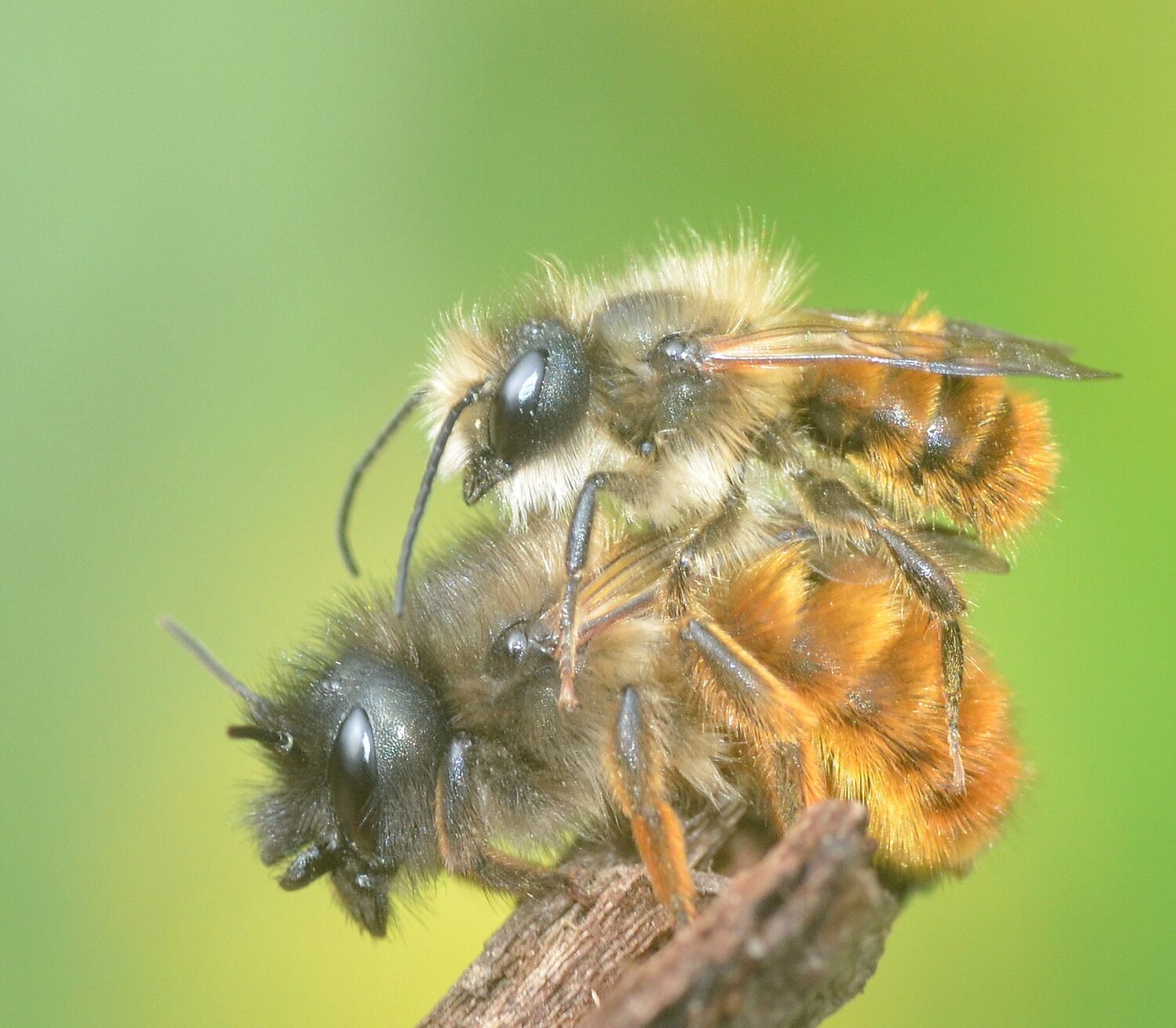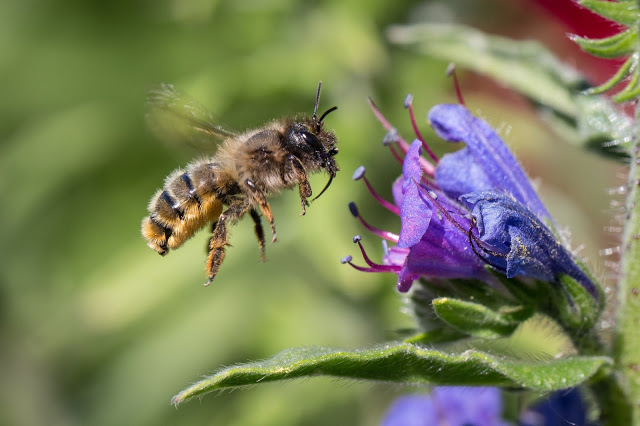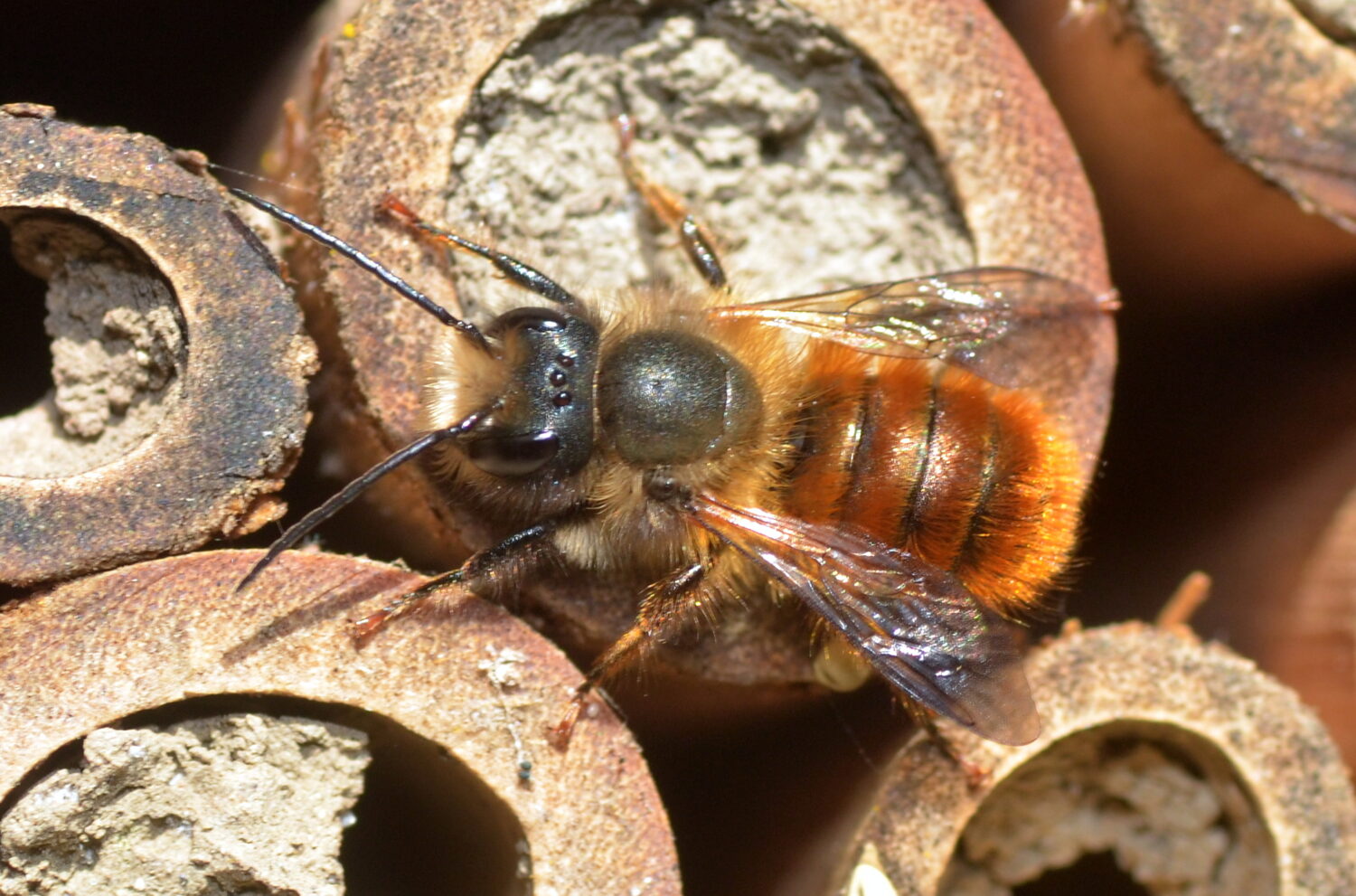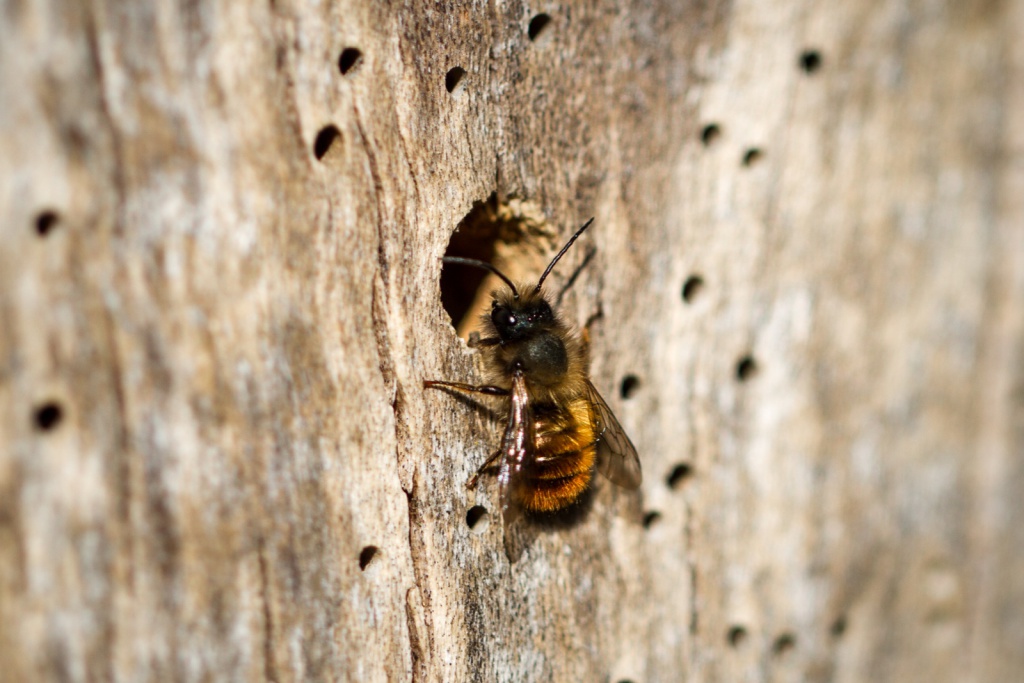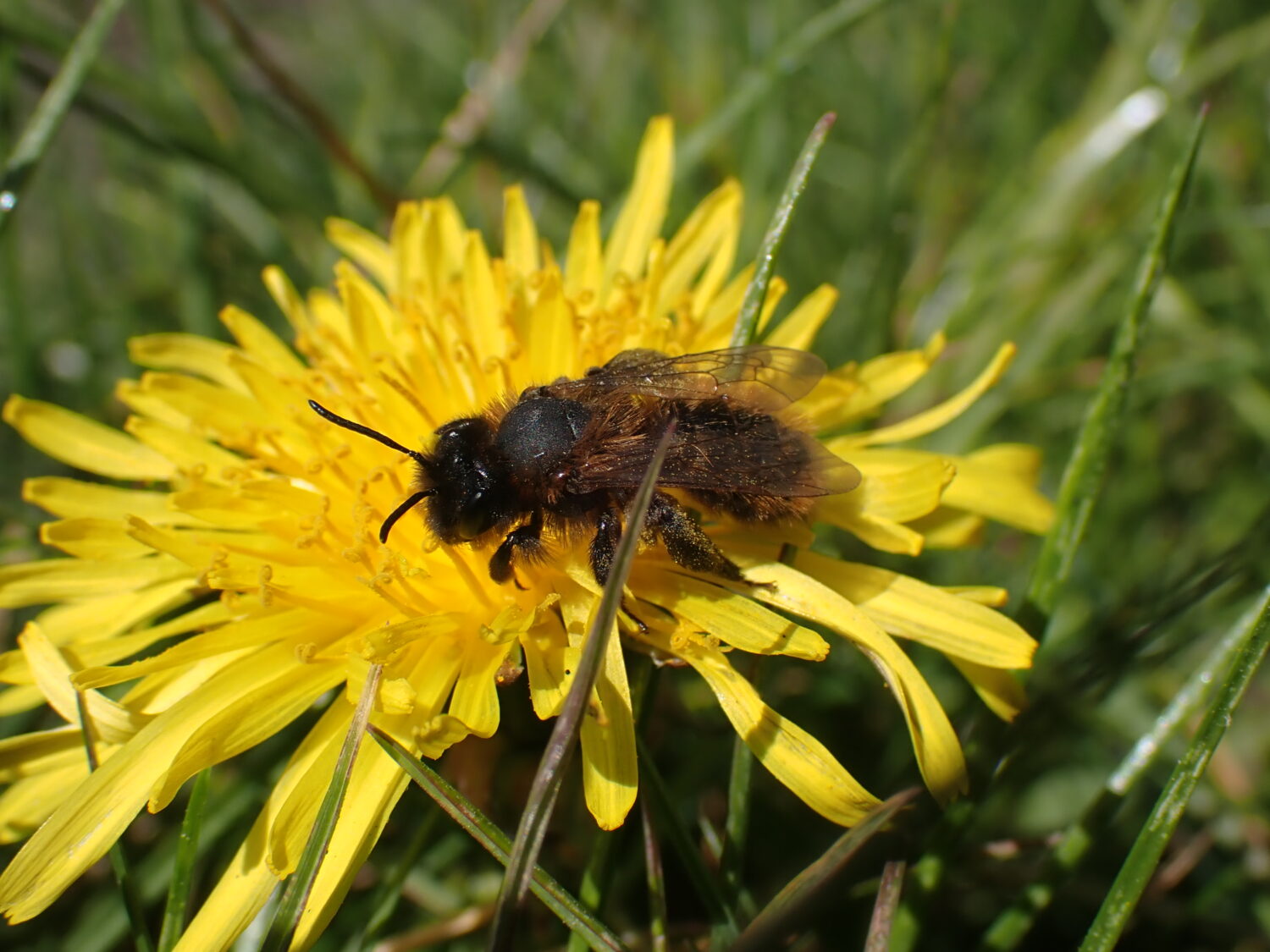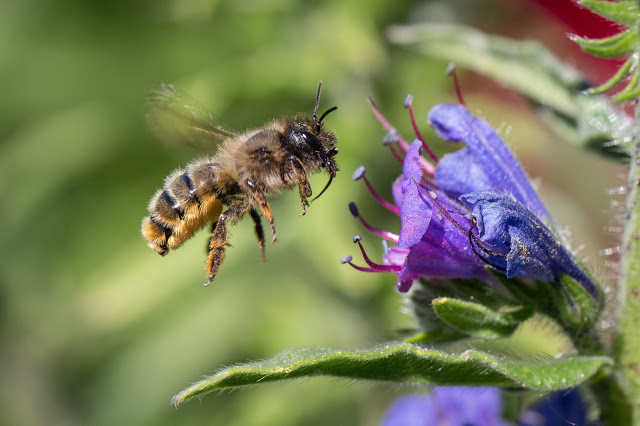Osmia bicornis
Fast facts
- Common name(s)
- Red Mason Bee
- Scientific name
- Osmia bicornis
- Bee group
- A species of solitary bee, belonging to the 'Mason Bee' group
- When to see it
- March – June
Description
The Red Mason Bee is a spring-flying solitary bee likely to be observed in gardens and parks. Females frequently nest in garden bee hotels and use mud to line their nests. They have unique facial ‘horns’ that are used to mould this mud into place. Unlike most bee species, females collect pollen on the underside of their abdomen.
Identification
Females
Females have a light brown thorax and dense orange-red hairs on the abdomen. The hairs on the thorax can appear sparse to reveal the black body underneath. Females have dark hairs on their face and the two facial ‘horns’ are unique among bee species in the North East. The underside of the abdomen has dense orange pollen-collecting hairs but is often covered in pollen.
Did you know?
The Latin name ‘bicornis’ means two horns, referring to the facial ‘horns’ of female Red Mason Bees.
Males
Males resemble females but are smaller and have very long antennae. Males also have a conspicuous neat tuft of light hair on their faces, often referred as resembling a ‘shoe brush’. Males do not have the two facial ‘horns’. Males are the first to emerge and can be observed hovering around nests awaiting emerging females.
Explore more images of the Red Mason Bee here
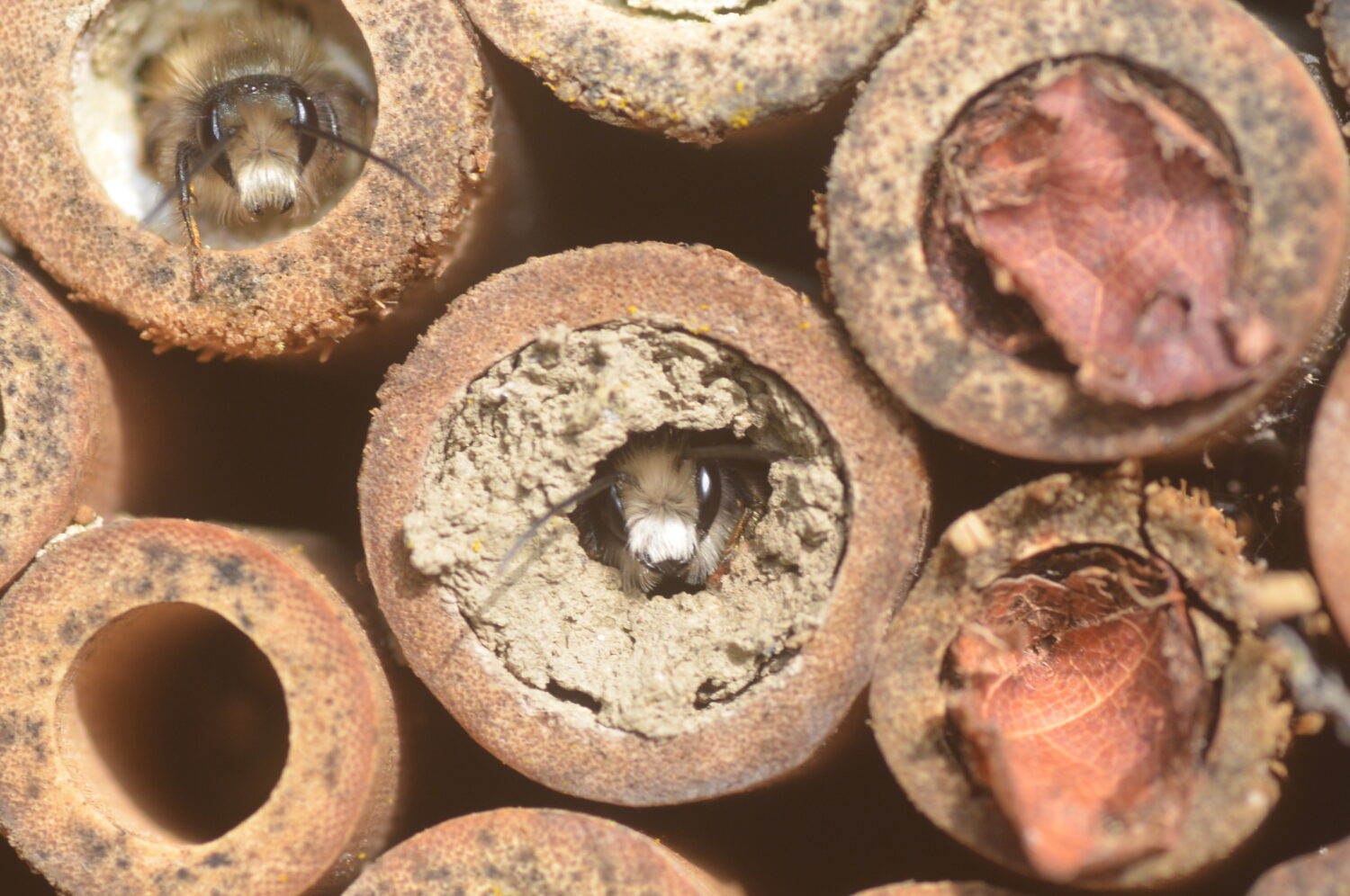
Spotted this bee?
Share your sighting of the Red Mason Bee and other North East Bee Hunt target species to contribute to the conservation and study of our region’s bees.
Similar species
Tawny Mining Bee
Female Red Mason Bees can be confused with faded female Tawny Mining Bees (Andrena fulva). Look out for the Red Mason Bee’s orange-collecting hairs on the underside of the abdomen and the unique facial horns. Female Tawny Mining Bees also have dense black-haired legs. The Tawny Mining Bee is also a target species of the North East Bee Hunt and its species profile can be viewed here.
Ecology
Red Mason Bees are aerial-nesting solitary bees that nest within pre-existing cavities such as soft mortar, old timber and bee hotels. They occupy a great range of habitats, with urban populations benefiting from the availability of garden bee hotels.
Males emerge before females and once mated, females will seek a place to lay their eggs. Females use mud to line their nests and have a unique feature to help with this. Females collect damp mud using their mandibles, but once back at their nest, the mud is molded into place using their unique facial ‘horns’. Unlike most bee species, Red Mason Bee females collect pollen on special hairs on the underside of their abdomen.
Find out more information about the Red Mason Bee here
Regional Distribution
The Red Mason Bee is recorded across the North East from Berwick-upon-Tweed to Middlesbrough. In 2020, the North East Bee Hunt received 78 records of this species from Northumberland and County Durham. The Red Mason Bee is considered a locally common bee in England and Wales, becoming scarcer in Scotland.
